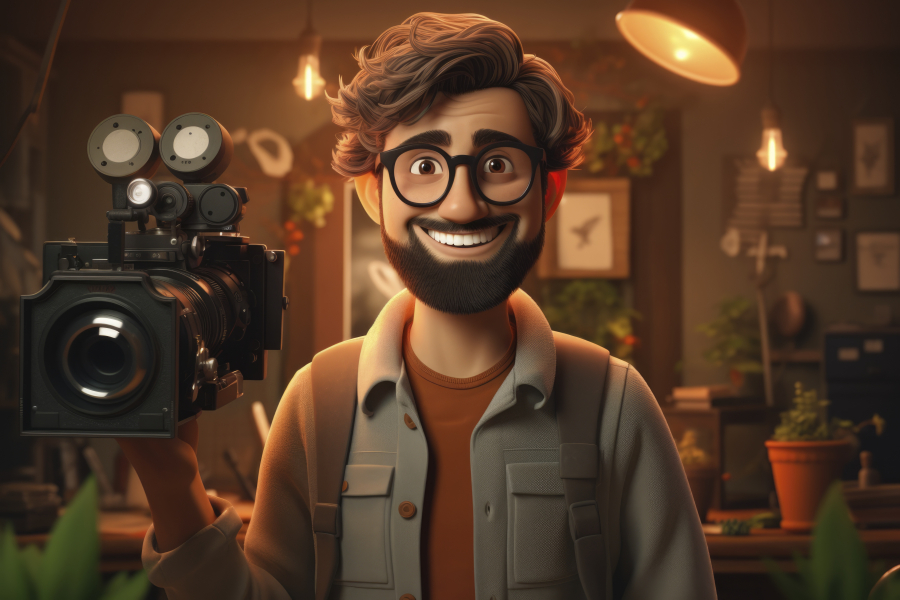3D Rendering Tips for Freelance Architects
In today’s competitive architecture landscape, 3D rendering is no longer a luxury—it’s a necessity. 🌍 Whether you’re pitching to a client, creating a portfolio, or working on a live project, high-quality 3D renders can elevate your work and make it stand out. 💻
As a freelance architect, mastering 3D rendering is not just about software—it's about understanding light, texture, detail, and storytelling. 🎨 In this article on freelancerbridge, we’ll explore essential 3D rendering tips that can help freelance architects create stunning visuals and win more clients. 🏆
📐 Long Description (Full Article: 1500+ Words)
🎯 1. Understand the Purpose of Your Render
Before jumping into software and settings, start with clarity:
Are you creating a client presentation?
Is the render meant for marketing, or a technical drawing?
Do you need realism or artistic expression?
📝 Tip: The clearer the goal, the better your choices for lighting, materials, and post-production will be.
🖌️ 2. Choose the Right Rendering Software
Some of the most popular and freelancer-friendly tools include:
SketchUp + V-Ray – Easy modeling with powerful rendering 🔍
Lumion – Real-time rendering with fast results ⚡
Blender – Free and powerful, great for animations 🎞️
Enscape – Real-time walkthroughs for architects 🏃
Twinmotion – Intuitive interface, great for architectural storytelling 🎬
💡 Pro Tip: Test trial versions before investing in premium software.
🌇 3. Master Lighting – The Game Changer
Lighting can make or break your render. It’s more important than textures or camera angles.
🔦 Tips for Better Lighting:
Use HDRI maps for natural outdoor lighting ☀️
Add area lights for soft, diffused indoor lighting 🛋️
Try three-point lighting for detailed interiors
Avoid overexposing your scenes
📸 Golden Hour Renders (early morning or evening) are popular for creating warm, emotional scenes.
🧱 4. Use Realistic Textures and Materials
The more realistic your textures, the more believable your scene.
✅ Use PBR (Physically Based Rendering) materials
✅ Pay attention to bump maps, roughness, and reflection
✅ Don't forget imperfections – real materials aren't perfect
🌿 Example: A concrete wall with subtle cracks looks more real than a perfectly smooth one.
🔍 5. Focus on Details that Matter
Great 3D renders are often about small details:
Curtains moving slightly 🌬️
Reflections in glass 🪟
Leaves scattered on the ground 🍂
Books or mugs on a table ☕
These touches make your scene feel lived-in, not sterile.
🖼️ 6. Set the Scene with Great Composition
Framing your render is as important as what you put in it. Use composition techniques like:
Rule of Thirds – Place key elements off-center
Leading Lines – Guide the viewer’s eye naturally
Symmetry and Balance – Creates pleasing visuals
Negative Space – Don’t clutter every inch
📷 Think like a photographer when choosing your camera angles!
🌤️ 7. Render Multiple Views
Clients often need more than one perspective to understand the space.
✅ Include:
Wide-angle views for layout
Close-ups for material and detail
Top views or aerial renders
Nighttime shots if lighting is a focus
📁 Organize your renders clearly and label each for easy reference.
🧠 8. Use Post-Processing Wisely
Even the best raw render can benefit from post-editing:
🛠️ Tools like Photoshop, Lightroom, or Affinity Photo allow you to:
Adjust exposure and contrast
Add atmospheric effects like fog or sunlight
Correct colors for mood and tone
Add people or background elements
🎨 Tip: Avoid over-editing! Keep it natural.
🚀 9. Speed Up Your Workflow
As a freelancer, time = money. Here's how to work faster:
Use render presets
Build a library of materials, models, and HDRIs
Automate repetitive tasks with plugins
Use cloud rendering (like Chaos Cloud, RebusFarm) to free up your PC
⚡ This saves hours and helps you meet tight deadlines.
🧑💻 10. Practice with Personal Projects
Client work can be limiting. So use your free time to:
Recreate real-world buildings
Experiment with styles (minimalist, brutalist, neoclassical)
Try futuristic or conceptual projects
🌟 These can boost your portfolio and attract dream clients!
🤝 11. Communicate with Clients Effectively
Your clients may not understand render jargon.
📢 So explain your process simply:
What each view represents
Why you chose certain lighting/materials
What’s conceptual vs finalized
💬 Client trust = more creative freedom
🧭 12. Stay Updated with Industry Trends
Rendering tools and styles change fast. Keep learning through:
YouTube channels (like D5 Render, Show It Better)
Online forums (CG Architect, Blender Artists)
Courses on Udemy, Coursera, LinkedIn Learning
Follow architects and designers on Instagram or Pinterest
📚 Learning never stops in freelancing!
💡 13. Optimize Your Files and Renders
Don't send heavy, slow-loading files. Optimize:
Render in appropriate resolution (4K only if needed)
Compress images for web or email
Save layers in editable formats (PSD, TIFF)
📤 Quick delivery = more professionalism.
🧾 14. Use Licensing-Free Assets
To avoid legal issues, always use:
Royalty-free HDRIs and textures
Open-source 3D models
Properly licensed fonts or graphics
🔐 Respecting copyright builds trust and avoids client risks.
🏁 15. Build a Strong 3D Rendering Portfolio
Your portfolio speaks louder than your pitch.
🖼️ Include:
Before/after images
Concept → Final visualization process
Client testimonials
A variety of styles and building types
💼 Host it on your own website or platforms like Behance, ArtStation, or Dribbble.
📢 Conclusion
3D rendering is an art, science, and communication tool rolled into one. For freelance architects, it’s a powerful skill that opens doors to better clients, bigger projects, and global exposure. 🌍
By following these 15 powerful rendering tips, you’ll not only improve your visuals but also build a reputation for quality, consistency, and professionalism.
At freelancerbridge, we’re here to help freelancers grow smarter. Keep experimenting, learning, and refining your craft—and your renders will speak volumes. 🎯


 by Emily
by Emily




